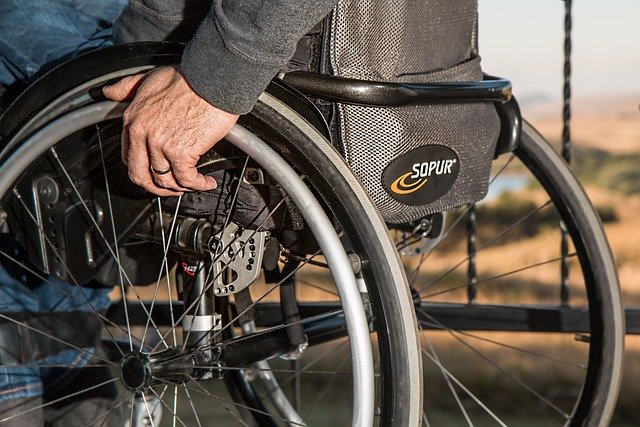Understanding Costs of Mobility Scooters for Seniors
Mobility scooters provide essential independence for seniors with limited mobility, but navigating their costs can be challenging. From basic models to premium options with advanced features, understanding the financial investment required is crucial for making informed decisions. This comprehensive guide explores the various price points, features that affect cost, and financial assistance options available to help seniors find the right mobility solution within their budget.

Mobility scooters represent a significant investment for seniors seeking to maintain their independence and quality of life. As mobility needs change with age, these powered vehicles offer a practical solution for those who struggle with walking longer distances but still want to remain active in their communities. The market offers a wide range of options with varying prices, features, and capabilities—making it essential to understand the financial aspects before making a purchase decision.
What Factors Influence Mobility Scooter Prices?
The cost of mobility scooters for seniors varies widely based on several key factors. Entry-level models typically start around $800, while premium options can exceed $5,000. The primary price determinants include the scooter’s size, battery range, weight capacity, and overall durability. Portable travel scooters designed for easy transport tend to be more affordable but may offer fewer features and shorter battery life. Mid-range models balance cost with functionality, while heavy-duty scooters with enhanced suspension, longer battery range, and higher weight capacities command premium prices. Additional features like adjustable seating, enhanced lighting systems, and all-terrain capabilities can further increase the cost.
Types of Mobility Scooters and Their Price Ranges
Mobility scooters for seniors generally fall into three main categories, each with distinct price points. Travel scooters, the most compact and lightweight option, typically range from $800 to $2,000. These models can be disassembled for transport but may have limited battery range and smaller weight capacities. Mid-size scooters offer better stability and comfort, priced between $1,500 and $3,000, with improved battery life and more features. Full-size or heavy-duty scooters provide maximum comfort, stability, and range, typically costing $2,500 to $5,000 or more. These premium models often include enhanced suspension systems, higher weight capacities, and additional comfort features suitable for daily, extended use.
How to Evaluate Features Against Cost
When selecting the right mobility scooter for seniors, it’s essential to balance features with budget constraints. Battery life significantly impacts both price and utility—higher-capacity batteries that offer greater range naturally cost more but may prove economical for active users. Similarly, weight capacity affects pricing; scooters supporting 300+ pounds typically cost more than those with lower limits. Comfort features like adjustable seating, suspension systems, and ergonomic controls add to the price but can be crucial for seniors with specific physical needs. Portability is another consideration—folding or disassembling scooters offer convenience but may sacrifice some durability or features compared to non-portable models at similar price points.
Additional Costs Beyond the Purchase Price
The initial purchase price represents only part of the total investment in a mobility scooter for seniors. Prospective buyers should consider several ongoing expenses. Maintenance costs typically range from $100 to $300 annually, depending on usage and model complexity. Battery replacement—necessary every 1-3 years—can cost $50 to $300 per battery. Insurance, while optional, may cost $100 to $250 annually to protect against theft or damage. Accessories like weather covers ($50-$150), baskets ($20-$60), and oxygen tank holders ($75-$150) represent additional investments. Many retailers also offer extended warranties beyond the standard manufacturer coverage, typically costing 10-20% of the scooter’s purchase price and covering 2-3 additional years.
Financial Assistance and Payment Options
Seniors exploring mobility scooter options have several potential financial assistance pathways. Medicare Part B may cover 80% of the approved amount for mobility scooters when prescribed by a doctor as medically necessary, though strict qualification requirements apply. Many Medicare Advantage plans offer more generous coverage for mobility devices than standard Medicare. Some private insurance policies, particularly long-term care insurance, may provide partial coverage. Veterans can explore benefits through the VA healthcare system, which often covers mobility aids. Additionally, nonprofit organizations like the American Outreach Foundation and state-specific assistive technology programs sometimes offer grants or subsidized equipment. Many retailers also provide financing options with monthly payments ranging from $50 to $200, depending on the scooter’s price and financing terms.
Comparison of Mobility Scooter Options and Prices
Below is a comparison of popular mobility scooter models across different categories to help seniors understand the market options:
| Model | Type | Key Features | Price Range |
|---|---|---|---|
| Pride Go-Go Elite Traveller | Travel | Disassembles into 5 pieces, 12-mile range | $899-$1,299 |
| Drive Medical Scout | Mid-size | 9-mile range, 300 lb capacity, adjustable seat | $899-$1,499 |
| Golden Technologies Buzzaround EX | Mid-size | 18-mile range, LED lighting, comfort suspension | $1,499-$1,999 |
| Pride Victory 10 | Full-size | 15.5-mile range, 400 lb capacity, full lighting package | $2,199-$2,699 |
| Golden Technologies Avenger | Heavy-duty | 18-mile range, 500 lb capacity, all-terrain capability | $3,599-$4,199 |
Prices, rates, or cost estimates mentioned in this article are based on the latest available information but may change over time. Independent research is advised before making financial decisions.
How to Find the Best Value for Your Budget
Finding the right mobility scooter for seniors involves balancing needs with budget constraints. Start by clearly identifying mobility requirements—considering typical usage environments (indoor, outdoor, or both), necessary travel distance, and physical needs. Test multiple models before purchasing, as comfort and ease of operation vary significantly between brands and models. Consider certified pre-owned options, which typically cost 30-50% less than new models while still providing warranty coverage. Timing purchases around seasonal sales events or end-of-model-year clearances can yield savings of 10-25%. Many retailers also offer price-matching policies or discounts for seniors, veterans, or association members. Remember that the least expensive option isn’t always the most economical in the long run—investing in quality features that match specific needs often proves more cost-effective than replacing an inadequate scooter.
Mobility scooters represent a significant but valuable investment for seniors seeking to maintain their independence. By understanding the various factors that influence pricing, exploring financial assistance options, and carefully evaluating features against needs, seniors can make informed decisions that balance cost with functionality. While premium features add to the initial price, they often contribute to longer-term satisfaction and utility. Taking time to research, test, and compare options helps ensure that the selected mobility scooter provides the best possible value while enhancing quality of life and independence.




